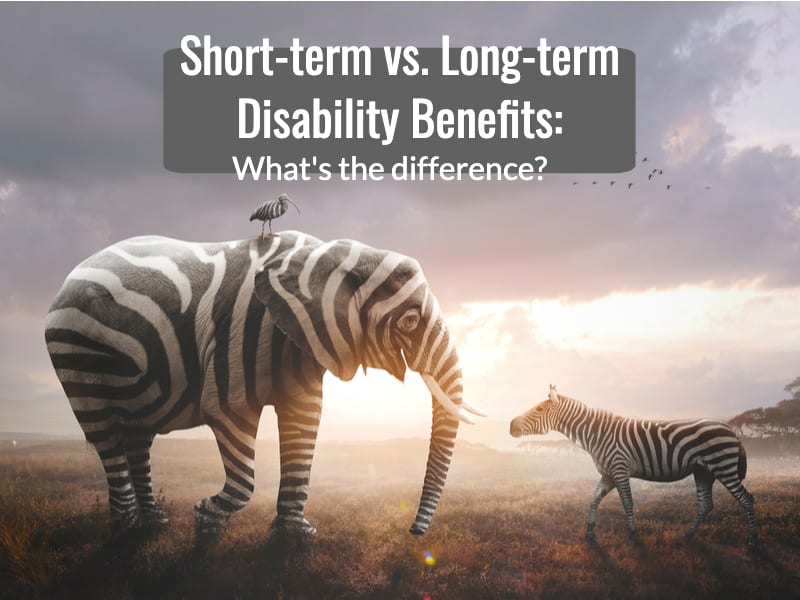You might think the name says it all when it comes to the difference between short or long-term disability benefits.
But, it’s actually not all that simple. There are some key differences that you might not know about. I’ll explain some of them in more detail below.
But first, here’s a very brief explanation of both types of disability benefits.
(Psst… For even more information, you can click through the next 2 sections to visit our Ultimate Guides.)
What are short-term disability benefits?
Short-term disability benefits are usually included in a group disability insurance plan. They are meant to replace part of your income for — you guessed it — a short period of time. To qualify for these benefits, you must be off work due to injury or illness. If you have paid sick time through your employer as well as group disability insurance, you usually have to use up that sick leave before applying for STD.
What are long-term disability benefits?
Long-term disability benefits are income replacement benefits that cover you for a longer period of time off work. They are included in group disability plans and can be used when short-term disability benefits, EI sickness, or employer-paid sick leave ends.
Differences between short and long-term disability benefits
Waiting periods
Disability insurance policies usually have a waiting period, sometimes known as an elimination period. This means you have to wait a certain amount of time before you begin receiving payments. The waiting period starts at the onset of your disability. You must wait the specified amount of time until you are eligible to receive benefits.
Short-term benefits might be available immediately, or very soon after you become disabled. Think 1-2 weeks, maximum. Keep in mind, the length of the waiting period might be different if you are sick as opposed to injured. Any waiting periods are set out in your group insurance policy.
Long-term disability waiting periods are longer, as you might expect. They can be anywhere from 3 to 6 months. If your insurance plan includes both short- and long-term disability, they will likely be set up so that the long-term begins when the short-term ends.
Length
The most obvious difference is the one that’s right there in the name. Short-term disability benefits cover a shorter period of time. Depending on the plan, the amount of time you can receive benefits is usually 3-6 months. This is the maximum amount. If you have to remain off work for longer, you will need to seek out different disability benefits. Usually, if your place of employment has short-term disability benefits, they will have long-term to follow when you run out.
Long-term disability benefits have the potential to last a lot longer. Some policies set out a maximum number of years, while some pay up to a certain age. Sometimes it’s a combination of the two — they might pay for ten years, or until the age of 65. Whatever the case, they are meant to cover much longer absences.
Payments
The amounts you receive from short or long-term disability benefits will vary depending on your plan. Usually, they cover a percentage of your pre-disability earnings.
Short-term disability benefits are paid weekly or biweekly. They can cover anywhere from 50% to 100% of your pre-disability earnings. Your policy determines the specific amount.
Long-term benefits are usually paid on a monthly basis. Again, the amount you receive depends on the specific plan, but will represent a percentage of your earnings before you went off work. The percentage for long-term benefits is usually around 60% or 70%. Sometimes there is a cap or a maximum amount you can receive. For example, your payments might be 60% of your pre-disability salary, up to a maximum of $4000 per month.
Definition of Disability
For short-term disability benefits, the definition of “total disability” stays the same for the entirety of your absence from work.
When you’re receiving long-term disability benefits, however, there is a change of definition. This usually happens 2 years into the claim. For the first 2 years, you are eligible for benefits if you are totally disabled. For the first 2 years, the definition of “total disability” refers to your inability to perform the duties of your own occupation — the one that you most recently left.
Usually around the 2-year mark, the insurance company will reassess your claim. The definition changes so that you must prove you are unable to perform the duties of any occupation.
Next Steps
Knowing which disability benefits you should apply for is half the battle. We always recommend getting a copy of your group benefits booklet as soon as you can so you can best understand the rules that apply to you.



